Tea is the most popular beverage in the world after water. However, only 20% of the world's tea consumed is green. Some people say they don't like this drink, but more often than not they just haven't found a strain that matches their taste.
Following simple advice, everyone can choose exactly the kind of green tea that will become their favorite and will allow them to appreciate the beneficial properties of this drink.
Content
- 1 What you need to know about green tea
- 2 Variety of green tea varieties
- 3 The best Chinese teas
- 4 The best varieties of green tea from the Land of the Rising Sun
- 5 In what form and where can you buy green tea
- 6 How to preserve the properties of tea
What you need to know about green tea
All types of tea, except herbal tea, are brewed from the dried leaves of the camellia sinusis plant. And the species determines the level of leaf oxidation. Green is made from unoxidized leaves and is one of the least processed natural foods.

Green tea is used in traditional Indian and Chinese medicine. It is called one of the healthiest drinks in the world, as natural chemicals called polyphenols have anti-inflammatory and anti-tumor effects.
Green tea polyphenols are 60-80% catechins (e.g. EGCG), antioxidants that help prevent cell damage.
Unsweetened Brewed Green Tea is a zero-calorie beverage.
The caffeine in a cup of tea can vary depending on the length of infusion and the amount of dry raw material.
In general, the amount of caffeine in green tea is relatively small (20 to 45 mg per cup) compared to black tea, which contains about 50 mg and coffee at 95 mg per cup.
Variety of green tea varieties
The history of the origin of the drink from the leaves of the tea bush goes back several centuries, it is believed that its homeland is China. After the plant began to be cultivated throughout Asia, creating various varieties and subspecies.
The name was given to the drink due to its natural green color. In fact, the different grades and grades of infusion give variations from emerald to golden.
The main differences between types of green tea are determined by:
- where it was grown;
- harvesting method%
- method of processing leaves.
Typically, green tea is made from the first harvest of leaves, which takes place from early to mid-spring. It is believed that it is from this harvest that the highest quality and most expensive varieties are obtained.
Green tea differs from black and milk oolong tea in that the leaves are steamed in their raw form after harvest, avoiding the oxidation process leading to blackening of the raw materials.
Stopping the oxidation process is the first step in harvesting green tea, but there are various options for this step.
For example, Japanese and Chinese green tea differ in how the oxidation stop process takes place.Chinese green tea farmers roast the leaves, while Japanese farmers steam it. Therefore, Japanese tea is considered to be more delicate. But this is not always true!
At the place of cultivation and collection are distinguished:
- Chinese;
- Japanese;
- Ceylon;
- Georgian.
According to the harvest method, there are varieties that are grown in direct sunlight or covered with a special screen for some time before harvest to keep the leaves tender. Tea is also distinguished by the time of collection (first, second and third harvest), by the state of the buds and leaves (even by their color).
According to the method of processing leaves, there are:
- steam treated;
- fried;
- fasting fermented.
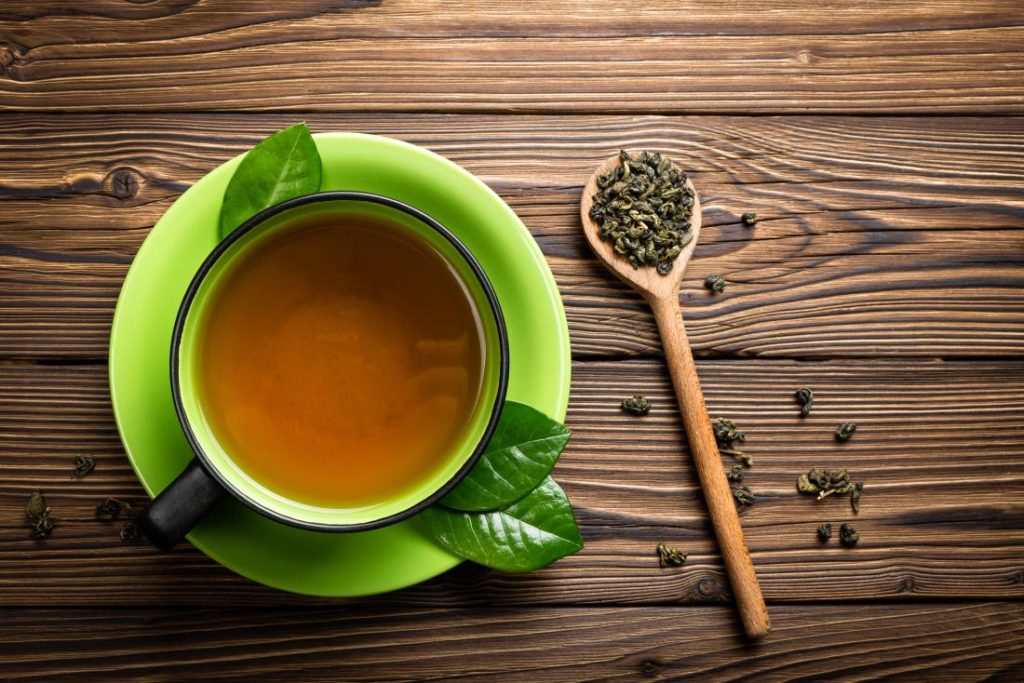
Depending on the size of the tea leaves, varieties are large-leaved, medium-leaved, from crushed leaves.
Also, teas come with various additives and flavors - from fried rice to pieces of fruit, flowers, milk essence and essential oils.
Of the flavored types of tea, jasmine, with lotus, orange, and cherry are popular.
The best Chinese teas
In China and on the island of Taiwan, tea is produced using various technologies. For mainland China, a respect for traditions is characteristic (some varieties have been produced since the 7th century AD).
Large-leaved varieties
Lun Ji - Elite Dragon Well
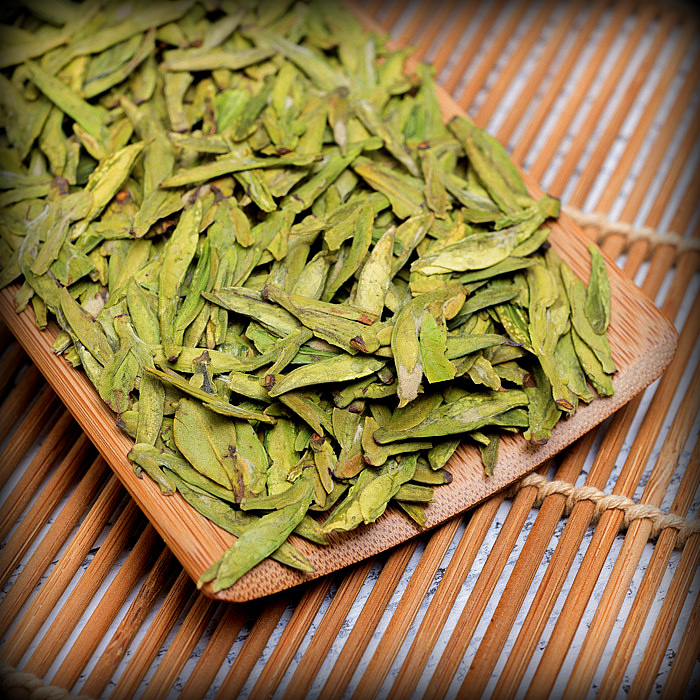
Grade No. 1 in terms of value for money can be called Lun Jing (龍井茶). The name translates as the Dragon's Well, and according to legend, the variety itself is more than 1000 years old.
The best Lun Jing is grown near Xin Hu Lake. The cost of this tea varies from 800 rubles. for 100 g. A simple variety of Lun Jing can be ordered with delivery at a price of 636 rubles. Tea contains leaves without impurities, smooth and not crowded, light green in color. The drink has a lotus scent.
Advantages:
- High content of vitamins B and C;
- delicate taste and aroma;
- relative availability.
Disadvantages:
- The high price level for the variety comes from the vicinity of Xin Hu;
- the ability to buy a fake.
Gentle Peaks of the Yellow Mountains
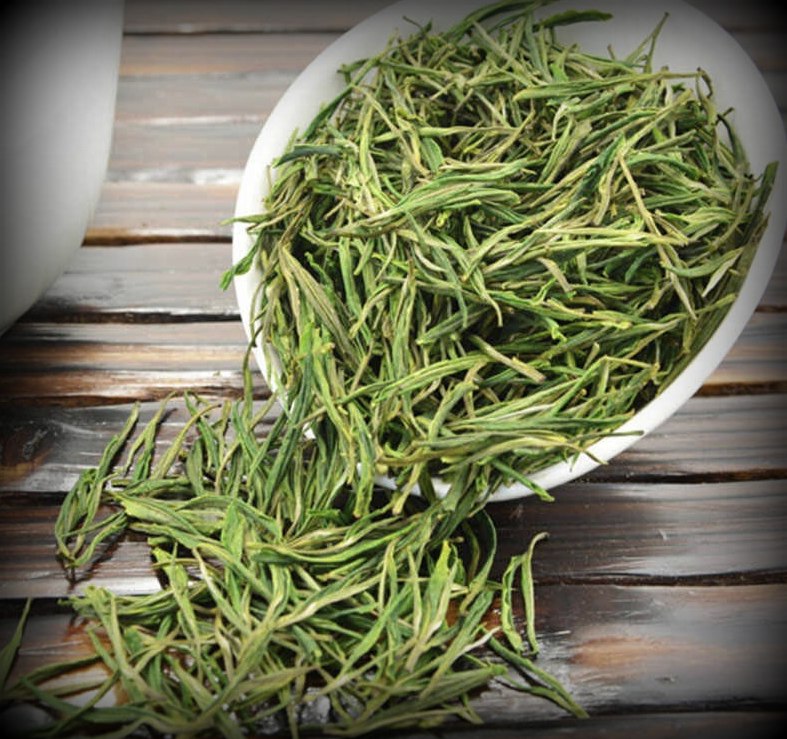
Huanshan Mao Feng (黃山 毛峰 茶) is a tea made from the swollen buds of a tea bush, which are fried to stop fermentation. Raw materials are carefully sorted, processed (dried) within one day.
The drink has a delicate sweetish taste without bitterness, there is a smell of flowers and nuts.
Ordering tea with delivery will cost at least 790 rubles. for 100 g with delivery. The price of the tea itself is from 490 rubles. for 100 g.
Advantages:
- light taste;
- relaxing effect;
- delicate aroma.
Disadvantages:
- high price;
- rarely found in tea shops.
Hou Kui - a gift from the Monkey King
The Hou Kui Tai Ping (太平 猴 魁) variety of tea acquired its unique taste thanks to the growth of bushes at a significant altitude in the mountains (700 m above sea level). According to one of the legends, the creator of the variety was the famous Monkey King (Sun Wukong) himself.
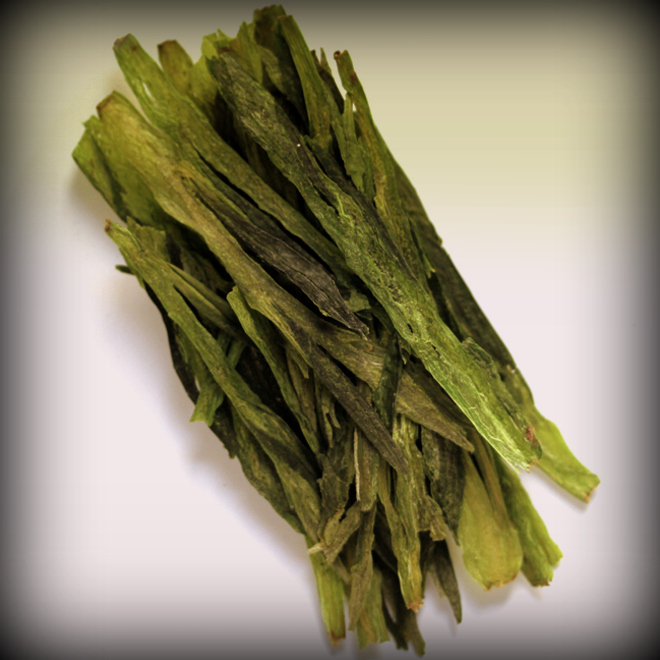
As befits a gift from the energetic Monkey King, this variety has pronounced tonic properties and antioxidant effects.
Tea is harvested only 2 weeks a year, processed quickly (1 day), fried and dried on sieves (therefore, the leaves are often corrugated). Smooth leaves are at least 5 cm in size. The smell of the drink resembles orchids, and the color is golden-green. This elite grade of tea costs from 870 rubles. for 100 g.
Advantages:
- pronounced tonic and anti-inflammatory effect;
- eliminates cough;
- increases potency.
Disadvantages:
- not recommended for people with high blood pressure;
- is quite expensive;
- can be bought mainly in online stores.
Medium leaf varieties
Bi Lo Chun - emerald spring spirals
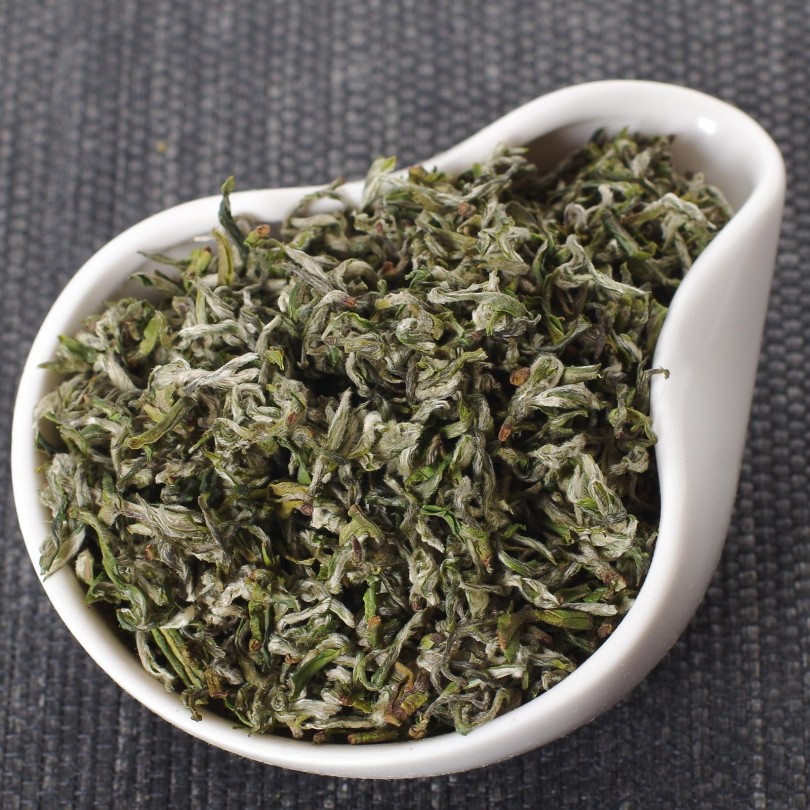
Bi Luo Chun (碧螺春) tea from Jiangsu province has the characteristic graceful shape of tea leaves (similar to miniature snails) and emerald hue of leaves. The drink is obtained with a delicate fruity-floral aroma and a slight relaxing effect. The size of the leaves is no more than 1.5 cm.
The color of the resulting infusion is light emerald.There are several varieties of this tea, including those consisting only of buds from the bush. The cost of 100 g of tea is from 1400 rubles.
Advantages:
- contains many amino acids;
- improves cardiac activity;
- reduces cholesterol levels;
- reduces body fat.
Disadvantages:
- is quite expensive;
- can only be produced by hand.
Gunpowder is the most popular "gunpowder" in Europe
The drink made from pearls of "green gunpowder" fell to the taste of Europeans, and in Russia it is not at all difficult to buy it. Small leaves rolled into small peas retain the tart taste of tea raw materials.
The resulting drink is yellow in color and has a mint, pepper and honey aroma. The cost of Gunpovder varies from 199 rubles. for 100 g.
Advantages:
- availability (can be bought in large supermarkets);
- pleasant taste;
- low price.
Disadvantages:
- the quality of the tea is average;
- raw materials with an original aroma do not always come across.
Oolong tea with ginseng - double benefits
Oolong teas are called teas that are grown in the highlands, have a high yield and acquire a rich creamy taste.
As an additive to improve its regenerating properties, ginseng root powder, a well-known remedy in Chinese medicine, is added to Oolong.
Tea is also considered extremely beneficial for male potency. Cost with delivery - 370 rubles. for 50 g.
Advantages:
- activates the body's recovery processes after illness,
- useful for heavy physical exertion.
Disadvantages:
- high price;
- difficult to buy in a store;
- not recommended for high blood pressure;
- not suitable for pregnant women.
Puer Sheng - a tea with special properties
Among the teas of the Pu-erh category (strong, strong), types of green tea are not often found. However, this variety is quite ancient.
The peculiarity of making Puer Sheng is that after steaming and drying the raw green tea is laid in layers and pressed. Further, the tea must mature under special conditions. This post-fermentation process takes 10 to 30 years.
The price ranges from 500 rubles. for 100 g up to 1400 rubles.
Advantages:
- extremely helpful in stabilizing diabetes sugar levels;
- promotes the removal of harmful substances;
- stimulates the adrenal glands.
Disadvantages:
- not recommended for use before bedtime (may cause insomnia).
The best varieties of green tea from the Land of the Rising Sun
The varieties of green tea from Japan are especially diverse, as more than 80% of the tea produced in the country is green.
Large-leaved
Sencha - 1st most popular

Sencha is one of the most widespread and beloved green teas in the world. Sencha is grown in direct sunlight and harvested on the first or second shedding. First harvest tea leaves are said to be usually of the best quality.
The tea leaves are then steamed, starting with the youngest leaves at the tops of the plants. After steaming, the leaves are dried. When the leaves curl, it also helps to retain all the juice inside and the tea tastes richer.
Since Sencha is the first crop of tea leaves, it has less time for photosynthesis, so it retains a high content of minerals and vitamin C.
Advantages:
- suitable for use in winter and in the off-season (to boost immunity);
- the cost of tea is not too high;
- can be bought at a major chain store.
Disadvantages:
- the taste is less subtle than that of tea grown out of direct sunlight.
Gyokuro
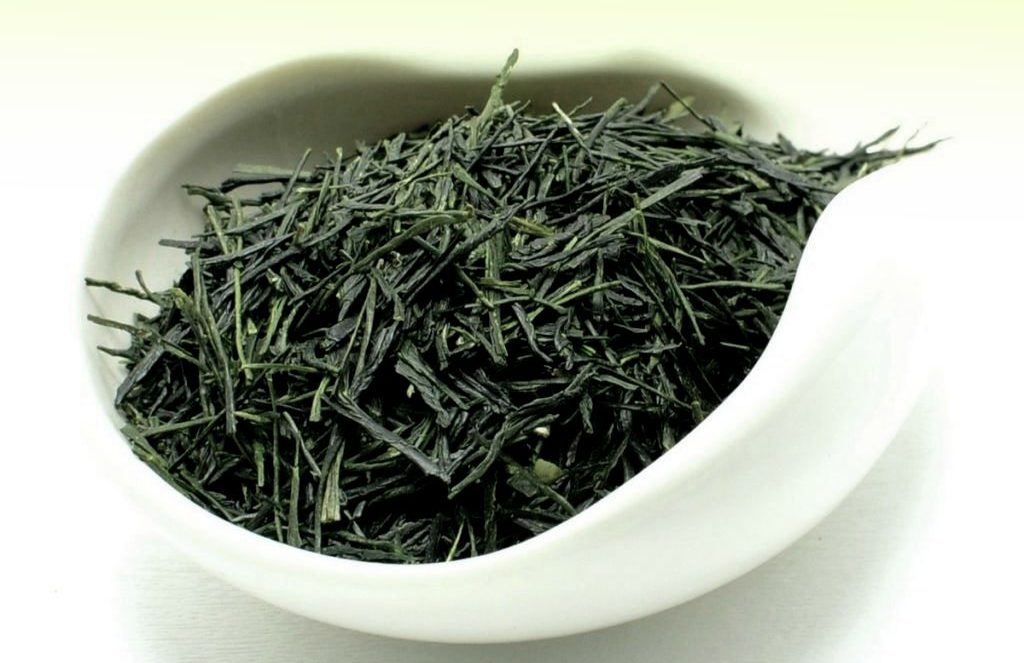
The process for making Gyokuro green tea is similar to Sencha, except that the tea bushes are shielded from sunlight three weeks before harvest.
When removed from sunlight, the leaves retain their amino acids and strong aroma, giving Gyokuro its richer flavor.
The tea then goes through the same steaming and rolling process as Sencha, but because tea is more difficult to grow, the price is higher.
Gyokuro has a sweet taste, which makes it quite popular.
Advantages:
- contains a large number of ingredients that stimulate the brain and nervous system;
- help to improve the condition of the skin and tissues.
Disadvantages:
- very high price - from 1215 rubles. for 100 g.
Tencha
Tencha is similar to Gyokuro tea. It is removed from sunlight 21 days before harvest, and once harvested, the leaves are steamed, air dried, and stalked. This variety is also produced in China.
Since Tencha does not undergo the rolling process, the larger leaves retain more nutrients, minerals and vitamins.
Tencha is great for boosting energy levels and improving metabolism. The leaves contain a large amount of natural caffeine.
Advantages:
- drink well before and after sports;
- awakens the body and promotes rejuvenation.
Disadvantages:
- it is not recommended to drink at night, as it can cause strong excitement of the nervous system.
Shincha - large leaves, rich taste
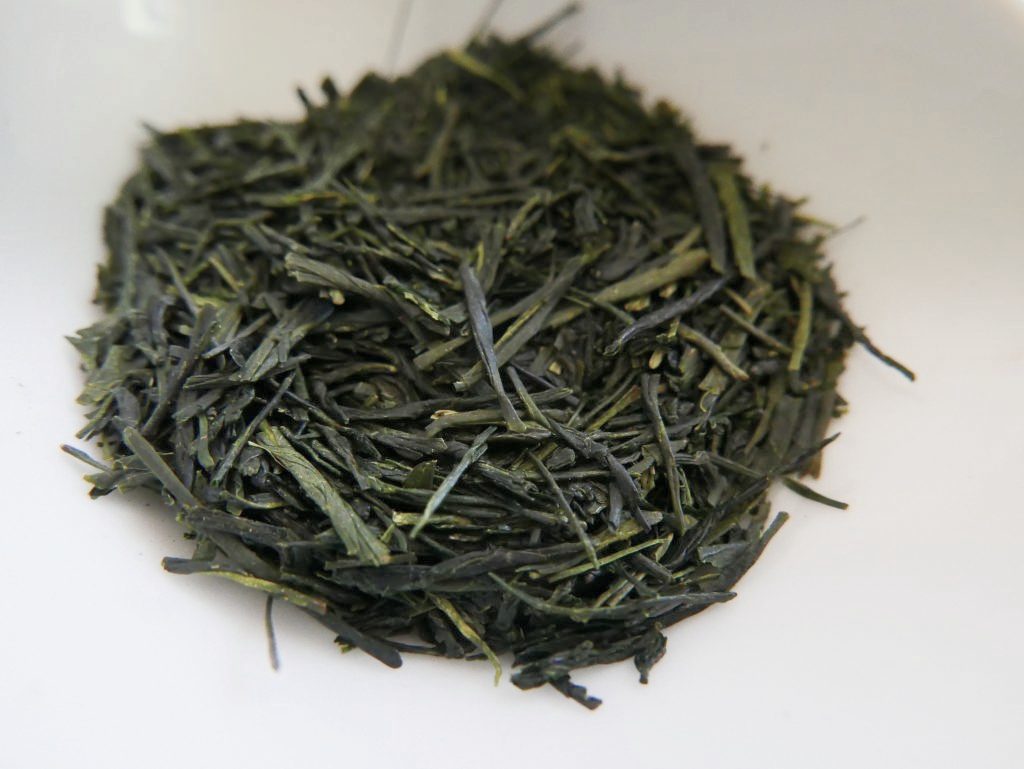
Shincha tea is a tea with large leaves of the first harvest, and as a result, the most valuable. The name “shincha” translates as “new tea”.
This variety includes tea leaves from bushes that have accumulated nutrients during the winter and early spring, and therefore are saturated with useful microelements.
The day of February 4 has become legendary in Japan, because, according to the popular opinion, the green tea collected on this day will bring good health and good mood for the whole year. A feature of Shinch is the fresh and invigorating scent of early leaves.
Advantages:
- reduced content of catechin and caffeine;
- there is no bitter taste;
- retains sweetness due to theanine.
Disadvantages:
- relatively high cost - from 830 rubles. for 100 g.
Bancha
Bancha are the leaves of the second harvest after the first harvest was used for Sencha. There are the names of Ningbancha and Sanbancha (second and third harvest).
Bunchy leaves are usually harvested in three periods ranging from June to October, with the raw material being considered less valuable with each new harvest.
Advantages:
- in folk medicine has become an effective remedy against caries;
- low price (from 250 rubles)
Disadvantages:
- Buncha is much more bitter than first collection tea;
- high fluorine content.
Medium leaf varieties
Fukamushi Sencha
Green tea steamed for about 2 times longer than usual is called Fukamushi.
Fukamushi means long steaming. Due to prolonged exposure to steam, the leaves become tender, the brewed drink acquires an intense taste and a more intense greenish color. Fukamushi lacks astringency and grassy flavor.
Advantages:
- rich taste and strength;
- can be drunk in large quantities due to the mild effect on the stomach
Disadvantages:
- tea is quite rare, the price with delivery is from 910 rubles. for 100 g.
- looks like tea made from powder, as the thin leaves break.
Kukicha
Kukicha is also known as twig tea because unlike most teas, it is made from twigs and stems, not just leaves. The color of the drink turns out to be yellowish or even brown.
But Kukicha is still made from raw materials that go through the processing process, like Gyokuro, Matcha and Sencha, that is, it is a relatively high-quality product.
Advantages:
- has a light aroma and taste that provides relaxation and allows you to wake up feeling fresh;
- the price of tea is relatively low.
Disadvantages:
- no rich taste like large leaf teas;
- the composition is mostly not leaves, but twigs.
Konacha (Hagari)
This tea is best known for being served in sushi restaurants, where it is called "agari". Konacha are essentially pieces of filtered kidney from the Gyokuro and Sencha processes.
Advantages:
- This tea has a very strong aroma;
- great for preparing or accompanying food.
Disadvantages:
- The health benefits are small.
Genmaicha
Genmaicha is bancha or sencha mixed with fried brown rice. After roasting, parboiled brown rice is ground and combined with sencha or another type of tea in a ratio of about 1: 1. It turns out a drink with an original taste.
Advantages:
- used as a sedative for the stomach due to the presence of grain components;
- contains little caffeine, so it is recommended for children and elderly people;
- tea is inexpensive (from 392 rubles per 100 g).
Disadvantages:
- the quality of tea is lower than that of elite varieties.
From shredded leaves
Matcha green tea
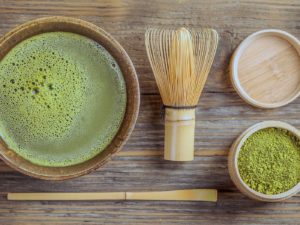
Known for its use in Japanese tea ceremony, Matcha is a powder made from tenchi tea. The origin of Matcha is largely associated with the Song Dynasty, during the reign of which doctors ground and brewed tea powder in the hope of enhancing its medicinal properties.
After shading, harvesting, and steaming, the leaves are then air dried, the steles and veins are removed, and then ground into a brew powder.
When mixed with hot water, Matcha retains a large amount of natural nutrients, rejuvenates the skin and cleanses the body.
Matcha is widely used in cooking to add a beautiful green color and pungent flavor to dishes. The cost of a match, which can be bought in large chain stores and on the Internet, varies from 320 rubles. for 100 g.
Advantages:
- allows the useful product from the leaves to be fully absorbed by the body;
- the cost of the product is relatively budgetary.
Disadvantages:
- the powdery state does not allow the rich taste to be preserved.
Konacha and Hojicha - fried teas
Although Konacha means tea powder, it is not actually a powder, but consists of small pieces of leaves that are discarded during the processing of Gyokuro or Sencha.
What makes Konachu special is that it can be fried, diluting the bitterness and giving it a stronger flavor. Affordable price.
Khojicha is produced by roasting Sencha or other types of green tea until a characteristic aroma is obtained.
The leaves are fried in a pan at about 200 ℃ and then cooled immediately. Roasting causes the caffeine to freeze (change directly from solid to gaseous state). Khodjic becomes less bitter.
Advantages:
- you can drink for children and the elderly;
- pleasant aroma;
- relatively low price (440 rubles per 100 g).
Disadvantages:
- useful properties of tea are not great.
In what form and where can you buy green tea
Green tea is available in many types, including:
- bottled and sweetened with sugar or artificial sweetener,
- in single sachets,
- packed in various containers (from foil bags to wood and porcelain),
- in soluble powder
- in the form of capsules or liquid extracts (additives).
Elite and original varieties of green tea can be purchased by placing an order in the online store or by going to a tea boutique. Cheaper varieties can also be found in supermarkets.
How to preserve the properties of tea
To fully enjoy the taste of green tea, you must follow simple rules:
- store tea in an airtight container in a dry, dark place;
- brew tea with water at a temperature not exceeding 90 degrees,
- do not brew tea in iron containers or boil (a teapot made of clay or glass is best suited).
A rich variety of green tea varieties will allow everyone to find a suitable drink for themselves and appreciate its healing properties.












